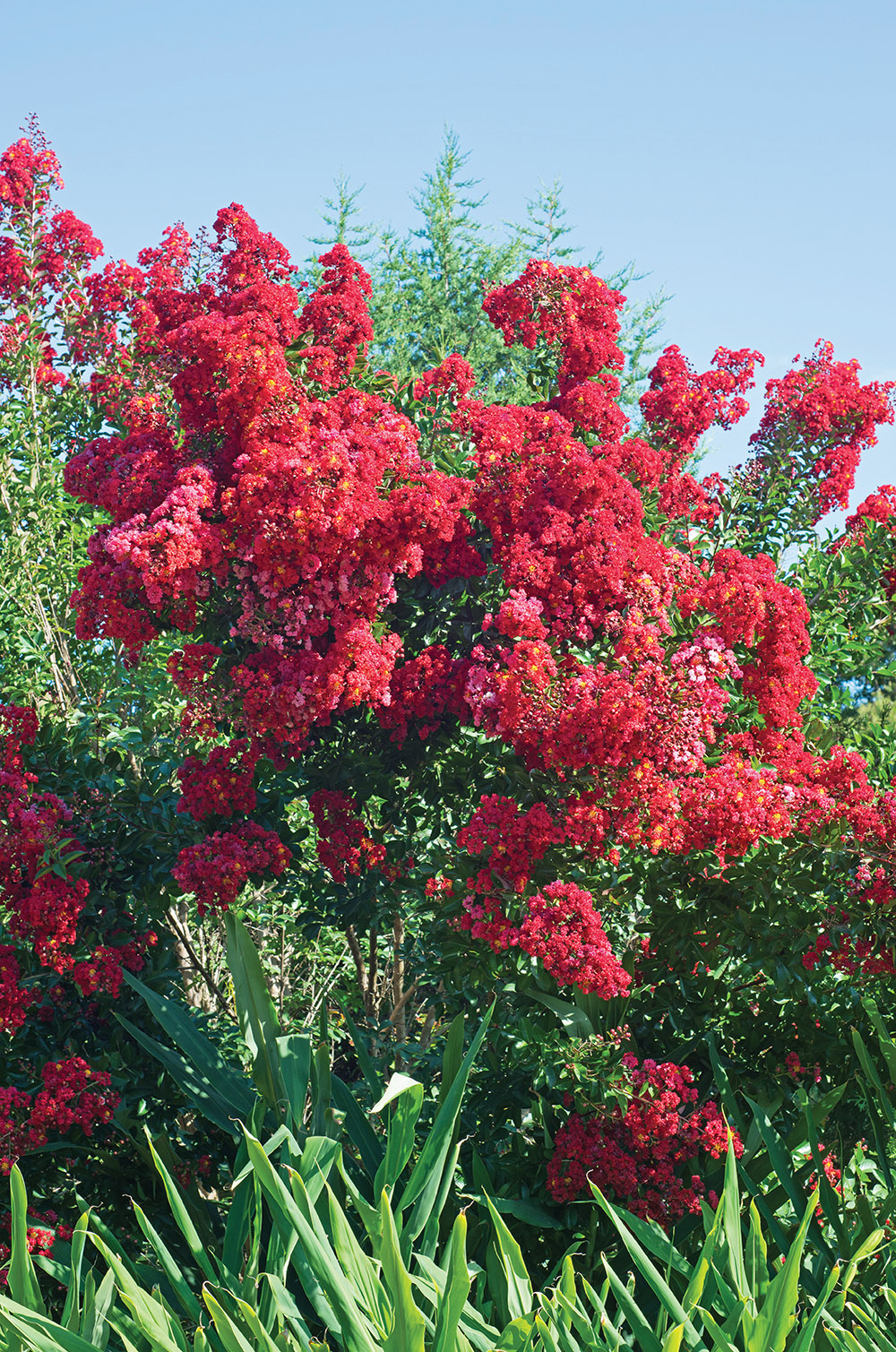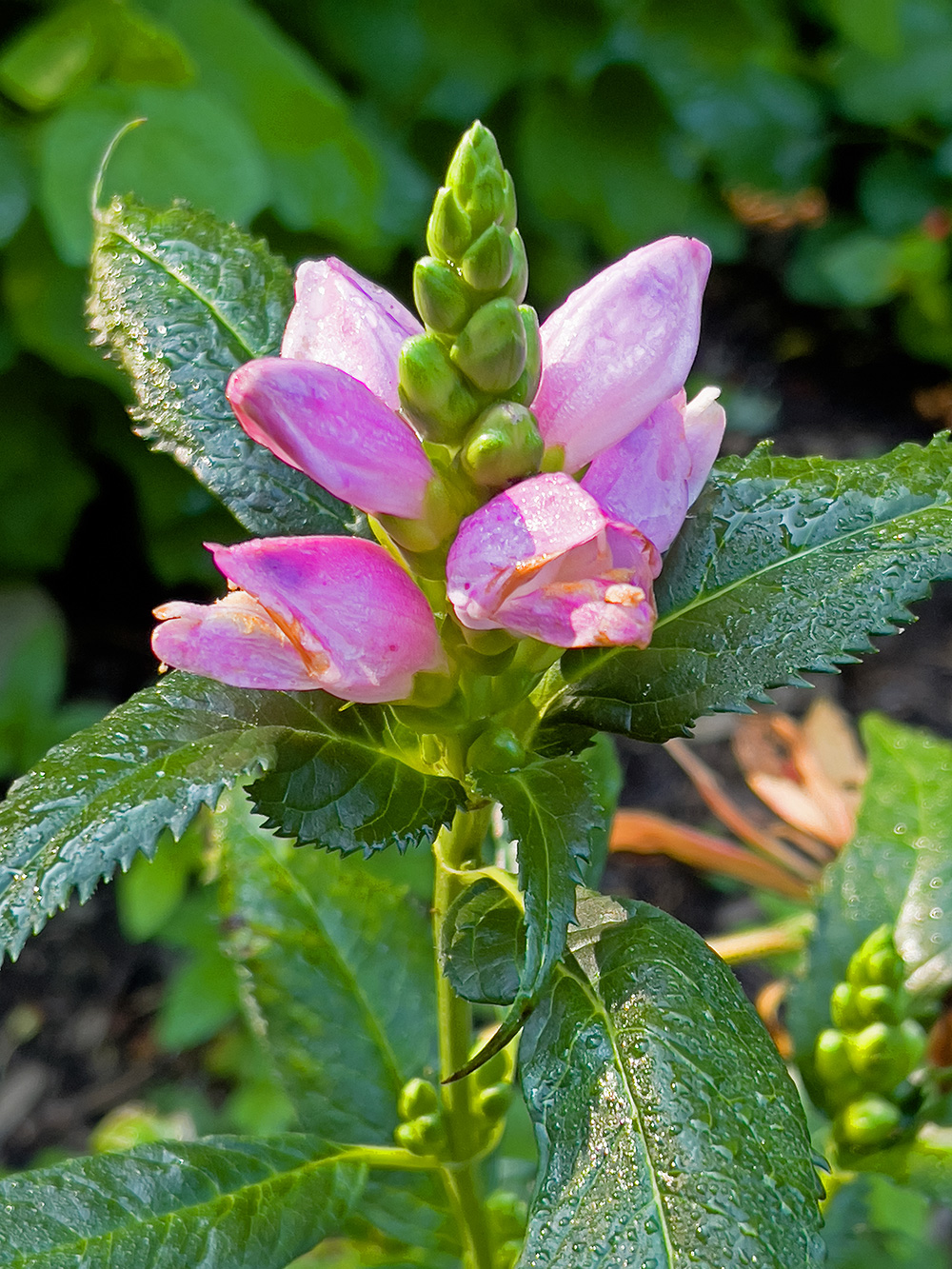Sometimes a weird name is the best way to describe an unusual flower. Take turtlehead (Chelone sp.), for example. Its hooded blossoms do — with some imagination on your part — look like a turtle poking its head out from a shell.

Red Rocket crape myrtle
Crape myrtles can be purchased anytime during the year, but buying them in midsummer adds the advantage of seeing these beauties in bloom — and the true colors of their flowers. Plant tag images can fade, and they aren’t always accurate, so eyeballing the actual blossoms is the way to go. Any crapes planted during the scorch of the summer should be given well-prepared planting holes, plenty of mulch, and regular waterings. A good alternative is to simply temporarily tuck away your new crape cuties with their pots in a semi-shady spot, water them weekly, and wait until the fall, which is prime planting time for woody ornamentals.
Aside from this plant’s odd name and strange-looking blooms, turtlehead is a rather pretty plant. And it’s pretty tough, too. An herbaceous perennial, it is native to the Southeast and has typical wildflower durability baked into its genes, including being deer resistant.
Turtlehead performs best in sunny to semi-shady gardens, but unlike many plants destined for your personal Ponderosa, it will thrive in soggy soil, making it a great addition to a rain garden or low spot in the landscape that turns to muck when the rains come. And it is an obvious option as a marginal plant in a water garden.
Turtlehead does provide visual satisfaction, but you have to be patient because it waits until the high summer to begin showing off its peculiar blossoms. By then, flower towers arise on sturdy, 2- to 3-foot stems with the lower clusters opening first, and then the bloom show steadily parades upward. This pleasant progression can last over a month.
If the flowers are left to go to seed, your turtlehead patch will continue to grow, just as long as the soil is kept moist to encourage new sprouts. In addition, a turtlehead will slowly expand its clump by way of underground rhizomes. And if you want extra turtleheads for other parts of your landscape or to give away to friends, it can also be propagated by divisions taken in the early spring, just as new growth begins to appear.
There are three turtleheads typically available for sale. Pink turtlehead (Chelone lyonii) is the most common — meaning easiest to find — and in particular, the cultivar ‘Hot Lips,’ which is quite a cutie with light rose flowers on red stems hovering over rich green foliage. Prefer white blooms? Chelone glabra will deliver with its pale, snapdragon-like blossoms. There is even a red turtlehead (Chelone obliqua), but the ones I have seen had flowers that were more a deep pink rather than a flashy red.
Since now into September is turtlehead’s prime blooming time, if available, it won’t be hard to spot at local nurseries, but if your search comes up short, this strange beauty is an easy find online.
To Do in the Garden
July
- If your home is adorned with tropical houseplants such as rubber tree, fiddle leaf fig, dracaena, or peace lily, be kind to these pretties and water them right. Instead of using chilly water straight from the faucet, fill a jug and let it warm to room temperature before giving your plants a drink.
- For best flavors and fragrances, harvest herbs early after the morning dew dries off of the foliage. This is when essential oils are more concentrated in their leaves.
August
- Although the temperatures are scorching, believe it or not, now is the time to crank up the cool-season veggie patch. Cabbage, Brussels sprouts, cauliflower, carrots, Swiss chard, collards, kale, lettuce, mustard greens, onions, radishes, spinach, and turnips can all be started this month.
- If you have houseplants vacationing outdoors this summer, check them carefully this month for any insect activity and dispatch accordingly to prevent any bad bugs or, in particular, their eggs from being brought inside this fall.
- It’s a good time to plant bulbs — no, not daffodils, hyacinths, tulips, and the like, but rather unusual fall-flowering beauties such as sternbergia, colchicum, and autumn-blooming crocus.
- Adding fresh water to the birdbath weekly is beneficial to birds, of course, but this chore will also help make your outside activities a little more pleasant because a neglected birdbath is a sure-fire skeeter breeder.
- Garden Adventurer: Strange Beauty: Turtleheads
- Celebrated Spirits: Crème de l’Orange Cider from Bull City Ciderworks
- Celebrated Spirits: Up in Smoke
- Small Business Spotlight: Raleigh Tea Company
- Pay it Forward: Meals She Eats
- Out & About in Wake County: July / August 2022
- Celebrating Local Food!
- Clayton: The Foodie’s Tour
- Restaurant Profile: Vidrio
- Chill Out
- The Art of Sushi







